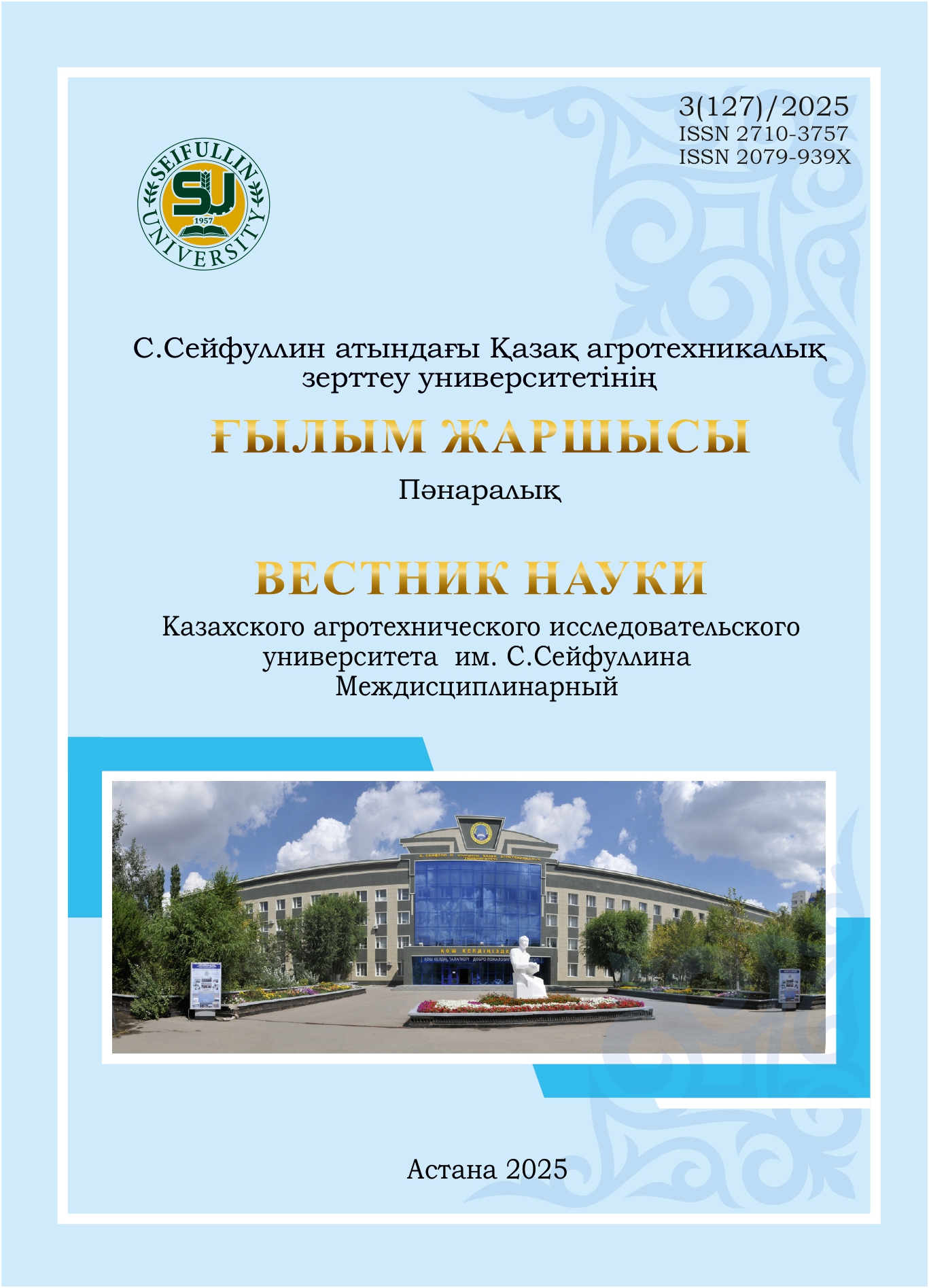Breeding and conformation characteristics of the Kazakh coarse-wool fat-tailed sheep breed
DOI:
https://doi.org/10.51452/kazatu.2025.3(127).2017Keywords:
Kazakh coarse-wooled fat-tailed sheep breed; bonitation; breeding indicators; information and analytical system (IAS); exterior; zootechnical accounting.Abstract
Background and Aim. Resistance to harsh conditions, unpretentiousness regarding feed and the ability to make long transitions make the Kazakh coarse-wooled fat-tailed sheep breed an important genetic resource for livestock farming in Kazakhstan. However, in modern conditions, the requirements for product quality, breeding work, and adaptation to intensive keeping technologies are increasing. To increase productivity and breeding value, it is necessary to carry out a comprehensive assessment of the exterior and breeding characteristics of animals; this assessment will facilitate the identification of highly productive animals, improve the breeding base and ensure sustainable development of the industry. This necessitates a scientifically based evolution of the breeding potential and exterior-constitutional characteristics of the Kazakh coarse wooled fat-tailed sheep breed. Therefore, the aim of this study is to analyze the results of the bonitation of sheep of the Kazakh coarse-wooled fat-tailed breed, as well as their exterior and constitutional features and productive and\ breeding indicators.
Materials and Methods. The analysis of data collected using the “Republican Livestock Breeding System” information and analytical system for Livestock Breeding, including zootechnical events and the class composition of animals, was performed. A comprehensive measurement of phenotypic parameters was conducted: height at the withers and sacrum, chest width behind the shoulder blades, chest depth, oblique body length, metacarpus girth. The measurements were carried out using standard zootechnical instruments. Based on the measurements obtained, the index indicators of constitution were calculated, which allowed for an objective assessment of the exterior type and compliance with breed standards.
Results. The prevalence of elite stock (up to 94.6% among rams) was established, which indicates a significant genetic potential of the studied population. The indicators of offspring and weaning in both farms are also at a high level (96-98%), indicating good organization of zootechnical accounting and animal care. The measurements and constitution indices of animals confirm their compliance with the breed standard, demonstrating good development, adaptability and adherence to the breed-forming type.
Conclusion. The use of the “Republican Livestock Breeding System” information and analytical system for Livestock Breeding made it possible to increase the accuracy of accounting and zootechnical records, automate breeding value calculations, and facilitate the analysis of breeding work. Consequently, selection and breeding work on the farms is well-organized, and the use of information technologies contributes to the further improvement of the breed qualities of the Kazakh coarse-wooled fat-tailed sheep breed. The obtained data can be used for digital management of selection work and the development of breed improvement programs.

